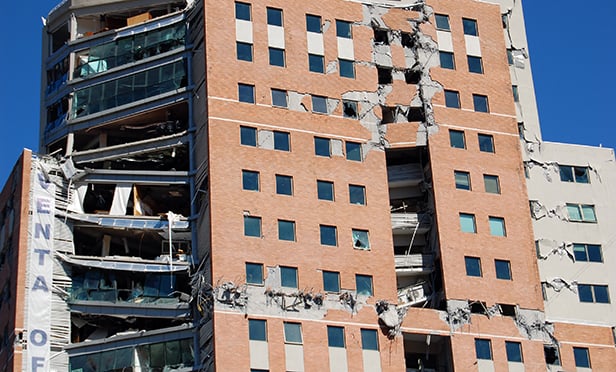Dallas
Market pros say it's impossible to tabulate the capital flow into Mexico's coastal and resort areas, but the investment landscape is North America's version of Dubai. At the forefront are apartment, condo and resort developers from the US, Mexico and Spain. The dance card holds names like Chicago's Sam Zell; New York City's Donald Trump; Dallas-based Rosewood Hotels & Resorts LLC; Toronto-based Four Seasons Hotels Inc.; White Plains, NY-based St. Regis Hotels & Resorts; Bethesda, MD-based Marriott International Inc.; and the Atlanta-based development arm of the UK powerhouse, InterContintental Hotels Group plc--and the list goes on and on.
"I don't know if anybody has attempted to quantify the numbers, plus it would be difficult to get information," says Embree C. Bedsole, Dallas-based managing director of the hospitality and leisure group for Alvarez & Marsal Real Estate Advisory Services LLC of New York City. "It's just wild guesses. The amount of money coming from the US, Mexico and Spain is just phenomenal."
According to Bedsole, the most significant change in the past year has been "the desire and willingness of private equity to do business in Mexico." The country rolled out the red carpet by legislating changes to make it easier and safer for foreign investment--planting the seed under former President Vincente Fox and harvesting it under President Felipe Calderon.
With the investment climate as likable as the weather, Mexico is the new frontier. Researchers with Parsippany, NJ-based Prudential Real Estate Investors' estimate nearly $22 billion will be invested this year in Mexico's housing sector. The three primary vehicles are funds that provide capital for local companies; private equity in direct investments to existing developers; and foreign companies setting up Mexican subsidiaries, a favorite with Spanish developers.
Bedsole, though, has some words of caution. "There is a false sense of security that they don't need a local partner," he says. "We see some coming in and they are inexperienced in the business landscape and aren't doing research. It's still a different country, with a different set of laws and different business customs. It's not any better or worse. It's just different."
William Gottfried, managing director of international premier properties at Keller Williams Realty Inc. in Houston, estimates half the investment dollars originate in the US, either from individual buyers or deep-pocketed investors. "Mexico is becoming a more secure buying experience and buyer-friendly place," he says. "Real estate development, particularly in the coastal areas, is a high priority for the government of Mexico."
Condominiums and hotel-condo projects lead the development frenzy, although fractionals, timeshares and rental units still hold their market shares. Gottfried estimates one-third to one-half of the condo buyers come from Texas. Other large concentrations hail from Chicago, Colorado, Southern California and Florida. With more direct flights from New York City and Boston, Gottfried says there's been an uptick of buyers from the Northeast as well.
Mexico opened mortgaging doors through legislative changes, but Gottfried says baby boomers and 30-somethings aren't mortgaging. "They're writing a large check or paying cash for their beachfront condos," he says, estimating 70% to 75% are cash buyers. And most are looking for a retreat for part of the year and rental investment for the balance.
Hot spots are Los Cabos and Baja California, where at least $2 billion of projects are under way. Ditto in Puerto Vallarta, Punta Mita, Loreto and the usual Mexican playgrounds of the Yucatan Peninsula and the Sea of Cortez. Development sites cost $250,000 to $3 million per acre; exit strategies carry seven-digit returns. Rosewood is building a 33-unit condo project in Playa del Carmen, with each unit tagged at $3.5 million. In Los Cabos, Gottfried says the going rate is $2 million per unit these days.
Neither Bedsole nor Gottfried see Mexico's projects turning into see-throughs or mimicking Miami's condo crisis because of present conditions in the US capital markets and the dollar devaluation. "There is the potential it could slow down in Mexico, but it would be an interim correction," Bedsole says, citing a slight sales decline a few months ago that went away as soon as new units came on line.
Gottfried continues, "All the developers are taking great care to preserve the heritage, the traditions, culture, history, ambiance and land of traditional Mexico. Not because it's the law, but because they really care. They're going beyond. I doubt very strongly, in five years, that you'll look at Mexico and see Florida."
Want to continue reading?
Become a Free ALM Digital Reader.
Once you are an ALM Digital Member, you’ll receive:
- Breaking commercial real estate news and analysis, on-site and via our newsletters and custom alerts
- Educational webcasts, white papers, and ebooks from industry thought leaders
- Critical coverage of the property casualty insurance and financial advisory markets on our other ALM sites, PropertyCasualty360 and ThinkAdvisor
Already have an account? Sign In Now
*May exclude premium content© 2024 ALM Global, LLC, All Rights Reserved. Request academic re-use from www.copyright.com. All other uses, submit a request to [email protected]. For more information visit Asset & Logo Licensing.








